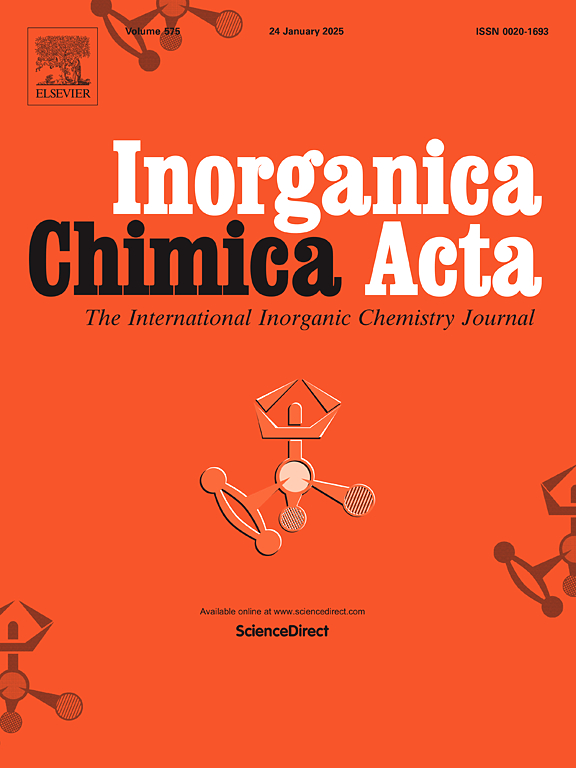Coordination behaviour of a family of o-xylene-based hybrid P,E ligands with platinum(II) and platinum(0)
IF 2.7
3区 化学
Q2 CHEMISTRY, INORGANIC & NUCLEAR
引用次数: 0
Abstract
The coordination chemistry of a family of hybrid P,E ligands of the type, o-C6H4(CH2PBut2)(CH2E) (E = SBut (1), S(=O)But (2), NMe2 (3)), with Pt(II) and Pt(0) precursors has been investigated. Both monodentate and chelating bonding modes were observed, along with a number of examples of hemilabile behaviour. Chelated [PtCl2(P,S)] and [PtCl2(P,N)] complexes have been synthesised, and unusual reactivity between [PtCl2(1,5-hexadiene)] and ligand 2 or 3 has been observed, resulting in σ:η2-bound phosphonium complexes. Three [PtH2(P,E)2] complexes were prepared, and in the case of ligand 1, derivatised to a number of [PtHL(P,S)2]CH(SO2CF3)2 complexes (L = CO, NCMe, 1,3,5-triaza-7-phosphaadamantane). One of these complexes, [PtH(NCMe)(P,S)2]CH(SO2CF3)2, undergoes reversible dissociation of MeCN resulting in chelation of one of the P,S ligands. Reactions with Pt(0) precursor complexes resulted in the first examples of chelated [Pt(alkene)(P,S)] and [Pt(alkene)(P,S=O)] complexes, and 14-electron [Pt(P,E)2] complexes of all three ligands.

求助全文
约1分钟内获得全文
求助全文
来源期刊

Inorganica Chimica Acta
化学-无机化学与核化学
CiteScore
6.00
自引率
3.60%
发文量
440
审稿时长
35 days
期刊介绍:
Inorganica Chimica Acta is an established international forum for all aspects of advanced Inorganic Chemistry. Original papers of high scientific level and interest are published in the form of Articles and Reviews.
Topics covered include:
• chemistry of the main group elements and the d- and f-block metals, including the synthesis, characterization and reactivity of coordination, organometallic, biomimetic, supramolecular coordination compounds, including associated computational studies;
• synthesis, physico-chemical properties, applications of molecule-based nano-scaled clusters and nanomaterials designed using the principles of coordination chemistry, as well as coordination polymers (CPs), metal-organic frameworks (MOFs), metal-organic polyhedra (MPOs);
• reaction mechanisms and physico-chemical investigations computational studies of metalloenzymes and their models;
• applications of inorganic compounds, metallodrugs and molecule-based materials.
Papers composed primarily of structural reports will typically not be considered for publication.
 求助内容:
求助内容: 应助结果提醒方式:
应助结果提醒方式:


